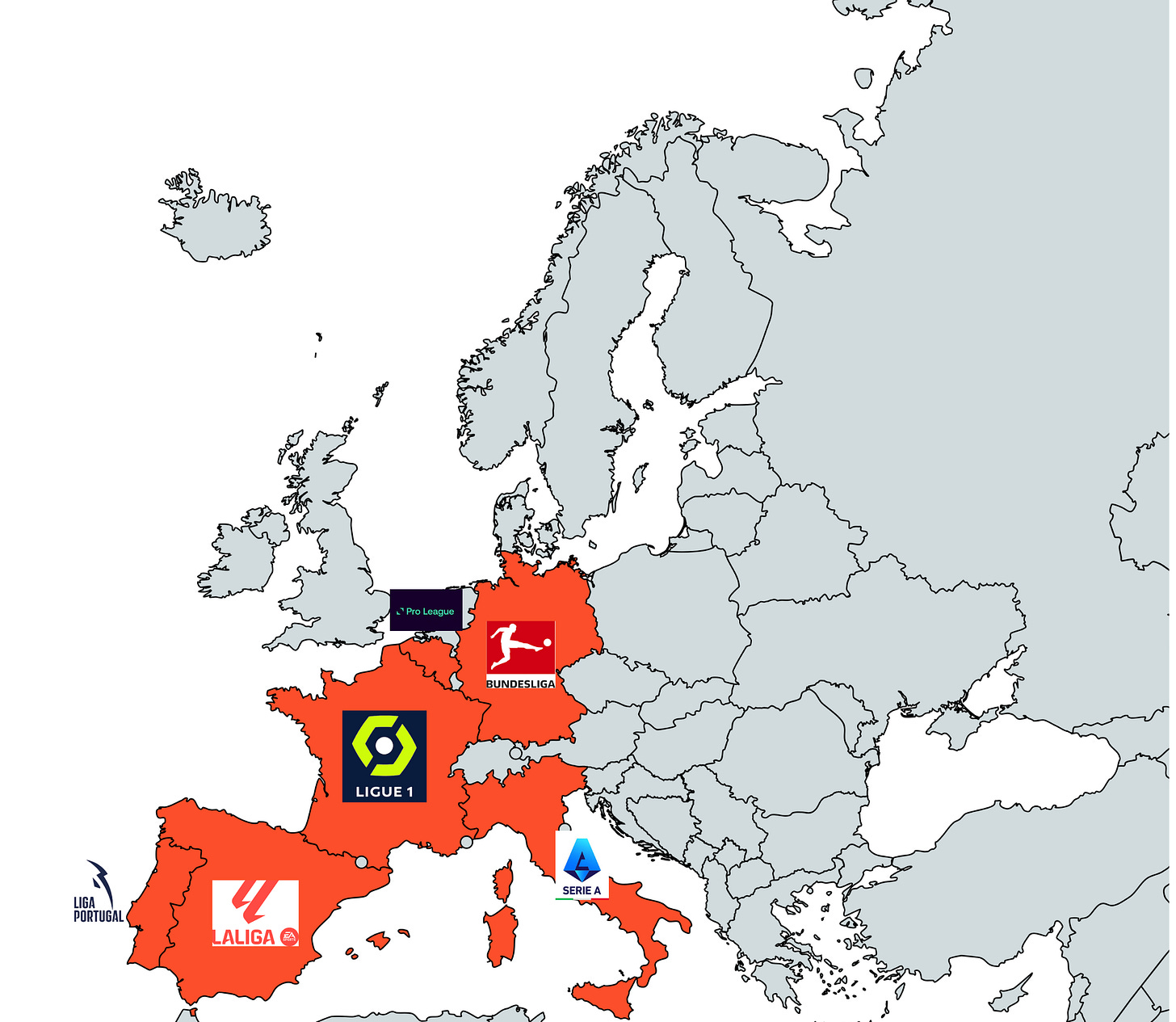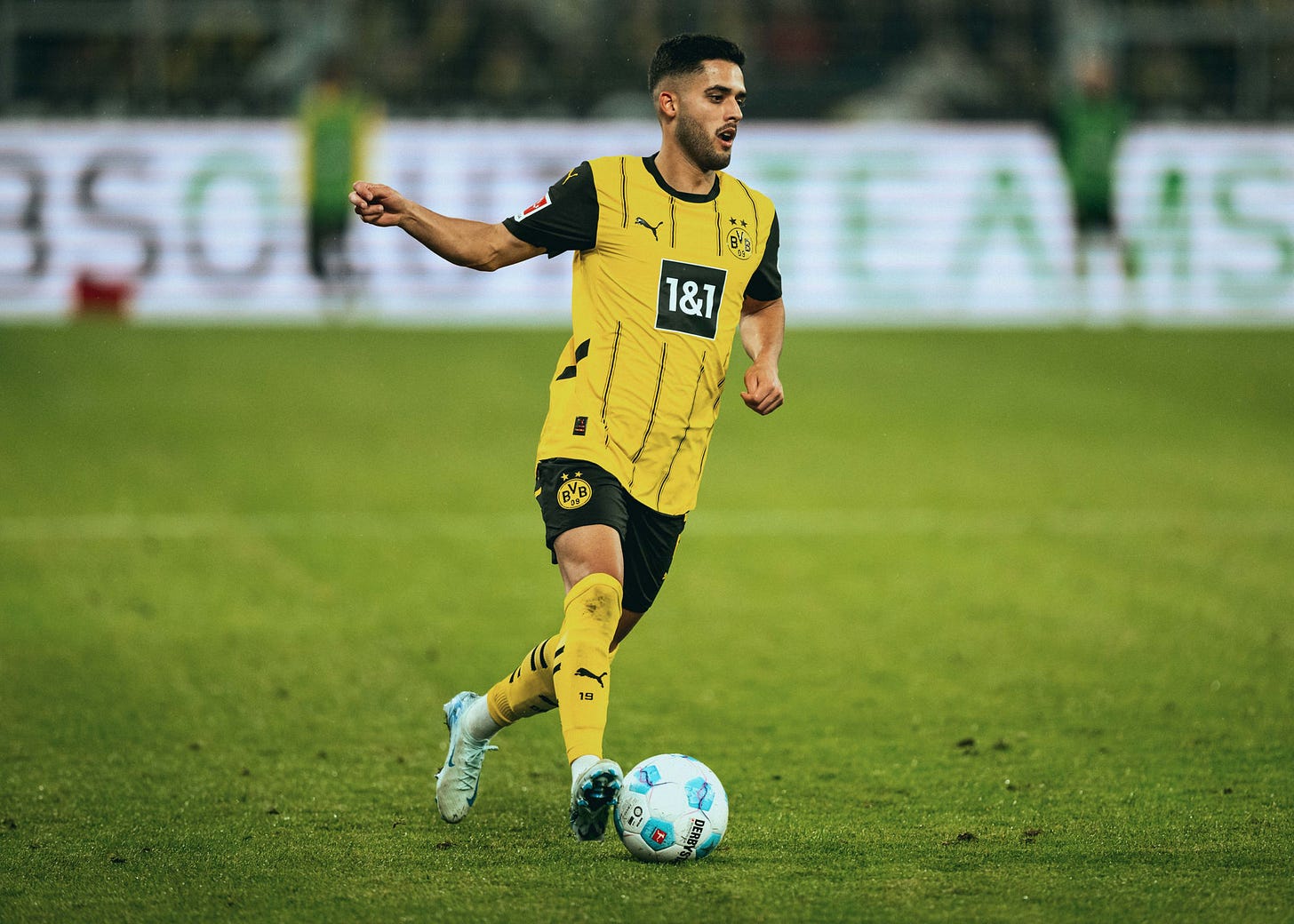Manchester United wasted no time in pursuing Ruben Amorim following the dismissal of Erik ten Hag—and for good reason. Amorim has emerged as one of the most highly regarded and sought-after young coaches in European football, thanks to his impressive tenure as Sporting CP manager. In just four years, he led the club to remarkable success, securing two Primeira Liga titles, including a historic triumph in 2021 that ended Sporting's 19-year wait for the Portuguese championship. He also added three Portuguese League Cups to his trophy cabinet, cementing his reputation as a rising star in football management.
Amorim’s System
Much of Amorim's success stems from his tactical philosophy, centered around a fluid, possession-based 3-4-3 system that seamlessly shifts into a 3-4-2-1 when needed. Out of possession, his teams apply relentless high pressing to disrupt opponents. He favors a double pivot in central midfield but frequently instructs one of his wide center-backs to step forward, creating numerical superiority to bypass the press and sustain control of the game.
A key feature of Amorim's system is the dynamic role of his wing-backs. In possession, they push high up the pitch to join the front three, adding width and attacking support. However, during transitions from attack to defense, the wing-backs quickly drop back into the defensive line, forming a solid back five to ensure stability and defensive coverage.
Starting the Evolution
Since his first day at Manchester United’s Carrington training ground, Amorim has been working with the squad inherited from Erik ten Hag, which was designed to suit a 4-2-3-1 system. As a result, he has had to adapt and experiment with his starting XI, particularly in the wing-back positions. One notable adjustment has been deploying Diogo Dalot on the left, which has created an imbalance due to Dalot being naturally right-footed and accustomed to playing as a right-back. Additionally, young talent Amad Diallo has been utilised as a right wing-back in matches where natural right-back Noussair Mazraoui has shifted to a right center-back role. While Diallo brings excitement and potential, he has struggled to maintain his attacking impact in this unfamiliar position and is occasionally caught out defensively—a challenge that is understandable as he continues to adapt to the role.
Amorim's project is still a work in progress, and it is evident that he currently lacks the personnel required to implement his style of play and tactical approach effectively. He has repeatedly stressed the importance of patience in building a winning team, and that process seems to be taking shape, with the club now making a move for Lecce’s Danish left wing-back, Patrick Dorgu.
Based on the trendline below, it appears that it may take some time to turn United’s fortunes around. However, the key factor for his success will be the support and backing from the club to acquire the players he needs.

This data reflects a Manchester United side struggling to balance attacking output with defensive stability. The managerial change might indicate attempts to address these issues, but the trends suggest ongoing challenges in both creating chances and preventing opposition threats.
With the above in mind, we take a deep dive into players who can play as right wing back within Amorim’s system, assuming they have success in acquiring Dorgu in this window.
Data Analysis
To kick off the search, I started by setting some key filters to match the ideal profile of a wing-back Manchester United might target. Here’s how I narrowed it down:
Players aged 27 or younger
Players with at least 1,200 minutes of game time
Players with experience at right-back (RB) and/or right wing-back (RWB)
Next, I chose the leagues I wanted to focus on over the past calendar year. After some thought, I decided to analyse data from top-tier leagues in Belgium, Germany, France, Italy, Spain, and Portugal. These leagues provide a solid mix of talent and tactical styles, perfect for identifying the right fit.
We could have added in the English Premier League in, but given Man Utd's trouble with PSR, most domestic players will be on the high side of transfer fees.
Let’s get started!
The scatter plot below analyses average defensive duels, with the top-right quadrant highlighting players who excel in both duel frequency and success rate. Notably, Emil Holm (Bologna), Marvin Senaya (Strasbourg), and Vanderson (Monaco) stand out, outperforming others in this metric.
You will notice both Yan Couto (Dortmund) and Dodo (Fiorentina) are both highlighted here as well. More on that soon!
As we take a look at the players’ averages in offensive duels from last year, you can see who are the two outliers are in the scatter plot below. Yan Couto & Dodô could be strong candidates for an offensive-minded right wing-back role due to their combination of high involvement and efficiency in attacking duels.
In our next plot below, we take a closer look at how players carry the ball and beat their marker, it’s evident that Yan Couto & Dodô stand out here, outperforming all others in this metric. Their ability to successfully take on opponents while progressing the ball highlights their effectiveness in one-on-one situations
This final plot examines both the quantity and accuracy of crosses, once again highlighting Yan Couto & Dodô as standout performers compared to their peers.
Through a comprehensive look at defensive and offensive metrics, it's clear that different right-backs bring varying strengths to their game. While Holm, Senaya, and Vanderson showcase defensive dominance, Yan Couto and Dodô consistently emerge as the most dynamic attacking full-backs. Their ability to excel in dribbling, crossing, and offensive duels makes them prime candidates for a progressive right wing-back role. This comprehensive skill set reflects the evolving demands of the modern full-back in Amorim’s system, where defensive resilience and attacking contributions are equally vital to thriving at the highest level.
Comparison
Yan Couto: At just 22, Couto’s metrics suggest a dynamic, high-intensity full-back who thrives in both defensive and attacking phases. His exceptional pressures, interceptions, and deep progressions indicate a player who is integral to Borussia Dortmund’s style, prioritizing both ball recovery and buildup play.
Dodô: The Fiorentina full-back offers a more balanced profile, excelling in aerial duels and maintaining impactful passing contributions. While his defensive output is slightly less intense than Couto’s, his physical presence and reliability in possession make him a well-rounded option.
The Right Fit
When it comes to fitting into Rúben Amorim’s high-intensity, possession-based system at Manchester United, Yan Couto stands out as the ideal candidate. The young Brazilian’s skill set aligns perfectly with the tactical demands Amorim places on his full-backs, making him a more natural choice compared to Dodô.
Couto’s pressing intensity and defensive energy are tailor-made for Amorim’s style. His ability to apply pressure relentlessly and disrupt opposition play high up the pitch makes him an asset in a system that thrives on winning the ball back quickly.
Beyond his defensive work, Couto’s ball progression and attacking contributions add another layer to his game. With his superior ability to carry the ball forward and create opportunities in the final third, Couto provides the kind of dynamism Amorim values in wide areas. His knack for combining with teammates and exploiting space makes him an excellent outlet for building attacking momentum.
That said, Dodô offers a different profile that could still be valuable in certain situations. His aerial dominance and physicality make him better suited for matches against Premier League sides that rely on direct play or physical battles. Dodô’s reliability in aerial duels and his balanced defensive output could make him a useful option in games where Manchester United might need to prioritize stability over aggression.
Ultimately, Yan Couto would likely thrive as Amorim’s go-to wing-back, providing the energy, creativity, and progression required to execute the manager’s tactical vision.















